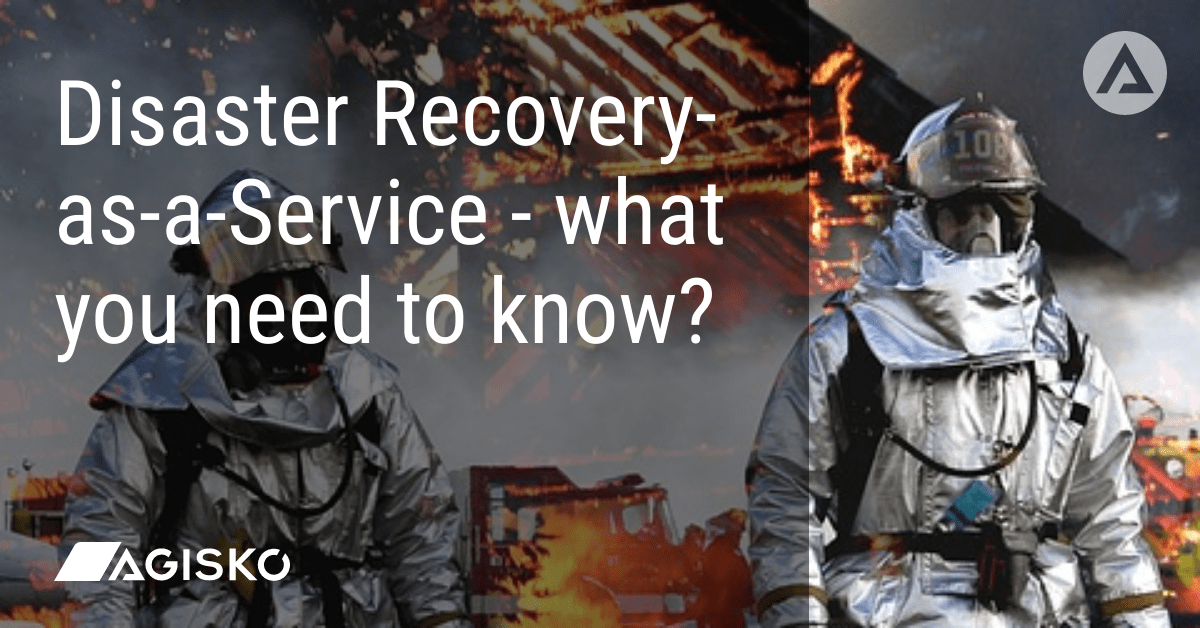Natural disasters. Unforeseen equipment failure or power outages. Crippling ransomware attacks. Even old-fashioned human error. All of the above can potentially spell disaster for business-as-usual in an organization if they strike.

For many digitally driven organizations, if users are unable to access the applications they use to perform their jobs, or the website goes down – even for just a few hours – it can be catastrophic and costly. That’s why having robust disaster recovery plans, methodologies, and infrastructure is essential.
When disaster does strike, you may be able to manage without certain aspects of your IT environment functioning for a period of time while you troubleshoot the problem, but in our modern digital world, application continuity is non-negotiable. It’s essential that those business-critical applications that keep people productive and connected with one another and your customers are back up and running quickly.
Of course, “disasters” don’t happen every day, which is why many organizations see value in engaging a third-party that offers a cloud-based disaster recovery solution for which they pay on a consumption-based, “pay-per-use” basis.
What is disaster recovery-as-a-service (DRaaS)?
So, what exactly is disaster recovery-as-a-service? DRaaS involves physical or virtual servers being replicated and hosted by a third party to provide failover should business-as-usual be unexpectedly disrupted.
Engaging an off-site party to provide DRaaS makes sense simply because should disaster strike and systems go down or become unavailable, a third-party that’s located elsewhere – and/or leveraging cloud platforms – is less likely to be impacted by such events. They can immediately activate a pre-configured disaster recovery plan.
Why DRaaS for Disaster Recovery?
One of the major drawcards of DRaaS is that it allows a business’s in-house IT teams to focus on more strategic projects without needing to worry about the mechanics of disaster recovery planning and execution as part of their role. In addition, DRaaS is very well-suited for mid-size organizations that simply can’t afford to hire these kinds of technical experts internally.
Adopting the DRaaS “as-a-service” model means that you don’t need to invest in costly secondary data center infrastructure yourself. Your provider is responsible for owning and maintaining these assets and coordinating and managing disaster recovery activities and interventions.
DRaaS is also a safer and more reliable option than traditional on-premise disaster recovery data center equipment. Too often, businesses simply assume that their on-premise infrastructure is functioning, only to discover that there are serious faults in the equipment when they most need it. With DRaaS, it’s quick and easy for your provider to test all elements of the infrastructure at regular intervals, so you’re not faced with unwelcome surprises in the event of a disaster.
DRaaS versus BaaS – Understanding the Differences
DRaaS is often confused or used interchangeably with backup-as-a-service (BaaS), but there are notable differences between the two:
- As we’ve discussed, DRaaS fails over processing to a third-party or cloud environment so that application continuity isn’t interrupted in the event of a disaster.
- BaaS, on the other hand, involves an organization selecting specific data sets and files which are backed up to a third-party’s storage systems. This ensures that no business-critical data is lost should the company’s primary data be accidentally deleted, corrupted, breached, or rendered unavailable through some other means.
3 most important focus points when selecting a DRaaS Provider
Naturally, it makes sense to engage a service provider with a solid track record in providing DRaaS to similar organizations in your industry and geography. After all, you’re putting trust in them to keep the lifeblood of your business flowing in the event of a catastrophic incident or failure.
Here are a few pointers to consider when making your evaluation:
1. Investigate Fee Structures
While DRaaS is recognized as a less-costly approach, when selecting a provider, it’s a good idea to look at the fine print. You need to ascertain that there are no hidden fees and that you only pay for services when you need (and use) them.
Also, look for providers that offer different DRaaS services for different classes of applications.
2. Understand Service and Performance Expectations
Ask specific questions, for example, how will your provider avoid potential bandwidth challenges commonly associated with continuous data replication?
Precisely how will they go about ensuring they meet your defined recovery time objective (RTO) and recovery point objective (RPO)?
3. Security & Data Integrity
We’re operating in a business environment where the highest levels of data security and compliance are “must-haves,” and cybercrime is everywhere.
This means you need to have absolute confidence in your DRaaS service provider's security when failover occurs.
As a leading application continuity expert, Agisko is trusted by organisations across all industries to look after their DRaaS needs. We avoid disruption in the event of a disaster by focusing on the availability of business-critical applications and ensuring that the underlying infrastructure continues to function.
If you’d like to find out more about our services get in touch.



